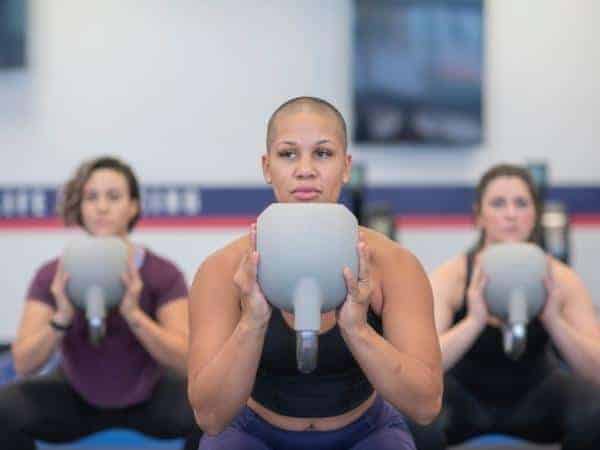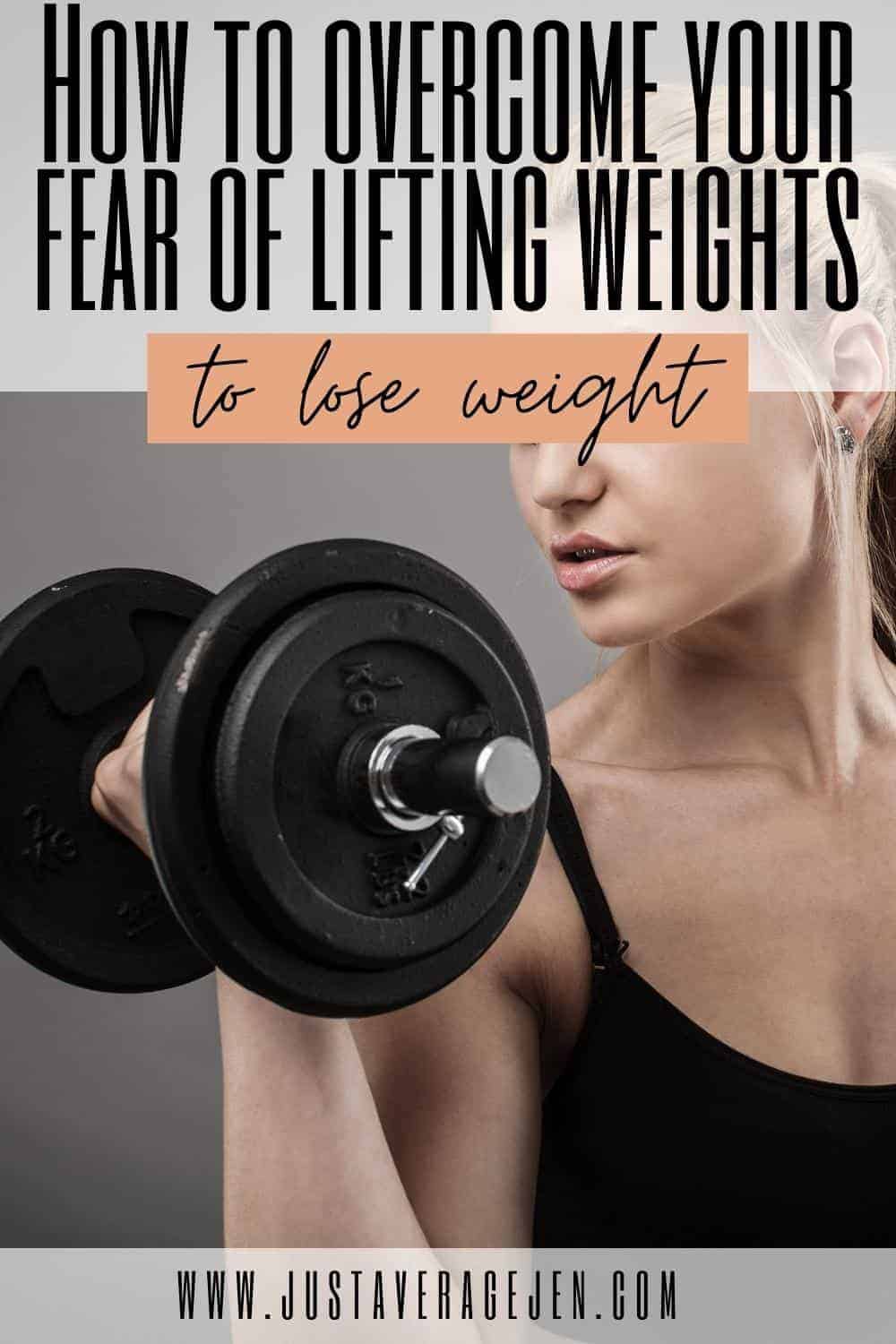Overcome your fear of lifting weights
This is a guest post from Richard at Active Goals to help women with a fear of lifting weights for weight loss to see it is something you can do and won’t give you a bodybuilder body unless you want it! If you want to lift for weight loss then read on!

My experiences of women lifting weights
As a Personal Trainer in a busy commercial gym, I have all kinds of fitness conversations with lots of different people. However, one recurring theme that I still hear is women thinking that they shouldn’t be lifting weights.
There are multiple reasons they give for this. “I don’t want to get bulky”, “the weight area is for men”, “I’m not confident enough”, “I should just do cardio to lose weight” etc. However, the reality is that women stand to gain just as much from a well-balanced resistance workout as men, maybe more in some instances.
This is why every single one of my clients’ training programmes is made up of a minimum of 50% weight training exercises. Hopefully, I can convince you to overcome your fear of lifting weights too.
Health
There are many health benefits to lifting weights, such as improved heart health, better sleeping, more energy, better posture, improved mood etc.
However, there is one health benefit that should be of extra interest to you ladies; weight training improves bone density and keeps your bones denser as you age.
Women are at higher risk of osteoporosis, particularly in the years following menopause – as confirmed by the NHS. WebMD states that women are 4 times more likely to get osteoporosis than men. So, to reduce your risk and keep those bones strong as you age, head over to the weights area.
Metabolism
Bigger engines burn more fuel, right? So, more lean muscle mass burns more calories. But here’s the crucial part: more lean muscle mass burns more calories when you are not exercising.
So the fact that you have more muscle will cause your body to burn more calories even when you are sitting at your desk at work or in the car. The more calories you burn at rest, the fewer surplus calories you have to potentially store as fat.
Many women enjoy fitness classes, which are all fantastic cardio sessions and form an important part of any fitness programme. However, cardio sessions only burn calories while you are performing the exercise. Once the class finishes, the calorie burn stops, too.
Weight training and HIIT both continue to burn additional calories after you finish exercising.
Extra muscle does not mean extra size. Many people holding on to a lot of excess body fat have a reduced amount of muscle mass, hence their slower metabolisms.
What compounds this issue is often a history of fad diets and poor nutrition. With each cycle of extreme dieting, more muscle mass is lost along with body fat.
When the diet is over, the reduced muscle mass equals an even slower metabolism than before the diet and excess body fat is stored even quicker.
Many people get caught in the trap of continuing this pattern for years instead of adopting a weight training routine that breaks the cycle, increases their metabolism and gets better results.
Strength
Everything we do in a weight training programme is transferable to real life. If you can lift a dumbbell above your head, then you can lift heavier belongings onto a shelf.
If you can lunge across the gym with weights, then you can carry more back from the car. Because weight training is progressive, the idea is to constantly push yourself to be able to lift more.
Then it becomes a matter of perception. If you go and collect a 10kg box from the post office, that box is going to feel much lighter to you if you’re used to deadlifting 50kg in the gym.
The “look”
The most desired female looks these days have come a long way since the skinny, one-apple-a-day-eating models, seen on the catwalk. Many women are turning to athletes, fitness models and Instagram influencers for their inspiration. Many of these women have a much more athletic look with a focus on muscular legs & bum.
Yes, you guessed it, that kind of look requires a good amount of work in the gym, specifically weight training. Your gym’s class timetable has a fantastic range of cardio sessions available. However, none of these will give your muscles sufficient stimulus to grow. For this, you need to be doing big, heavy moves like squats, deadlifts & hip thrusts – with enough weight to challenge you in the 10 – 15 rep range.
And no, lifting weights is not going to make you look big and bulky. The women who are bodybuilders train for years and years and take all kinds of supplements to look that way.
Naturally, women do not put on muscle as easily as men due to having different hormone levels. The muscle you gain will help shape your body rather than bulk. Plus, it takes time for anyone to build a significant amount of muscle, man or woman, so you will be able to change your training to a maintenance programme when you reach a point you are happy with.
If you’re looking for some help with your workouts, head over to my website and check out my Online Personal Training package. To read more of my content, check out my blog page.
Has this helped you overcome your fear of lifting weights? Do let me know in the comments. Remember to treat yourself if you are doing well, but not with food! Keep track of any weight loss with good scales, and be confident, you can do this!
